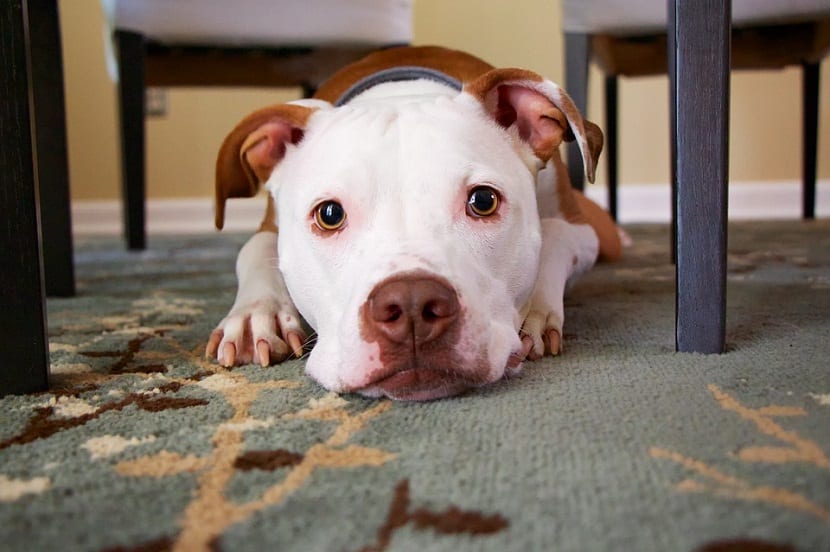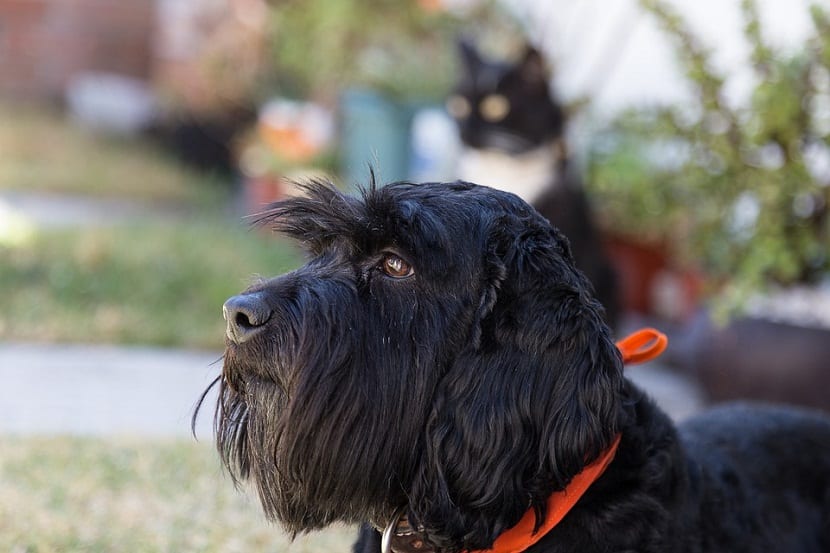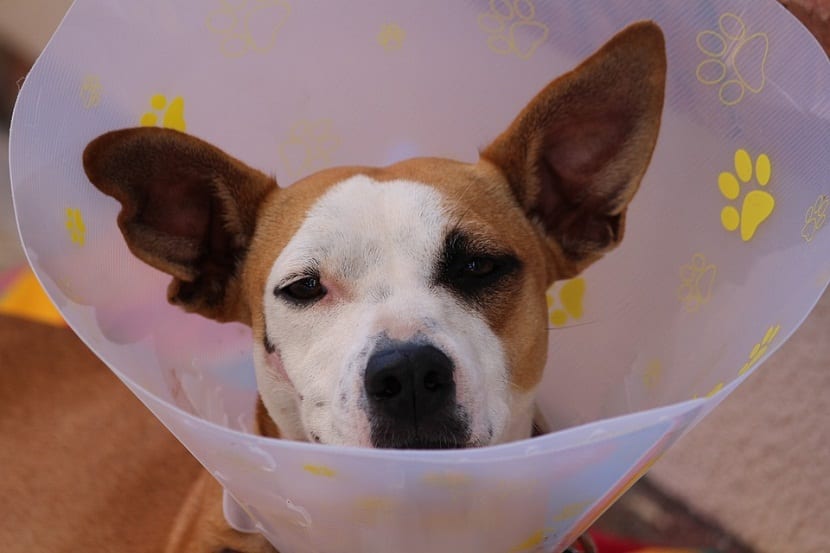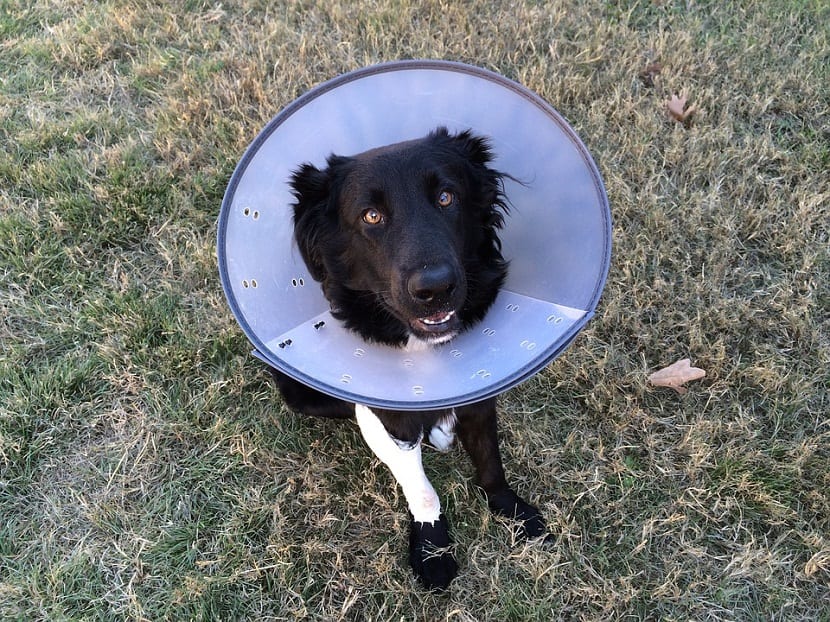
If you have two or more dogs of the opposite sex, surely you have wondered what is the difference between neutering and spaying. After all, preventing unwanted litters is one of the inherent responsibilities of the caregiver.
What is castration?

In the male it is based on the removal or surgical removal of the testicles (orchiectomy). The procedure involves general anesthesia. An incision is made just in front of the scrotal sac and both testicles are removed, leaving the sac intact.
Advantages of castration
With this procedure the dog's sexual impulse is inhibited and conflicts associated with the influence of male hormones are prevented, therefore it's easier to socialize with other pets. In this sense, it reduces or eliminates some forms of aggression, especially those influenced by male hormones.
As well eliminates the possibility of testicular cancer and greatly reduces prostate disease, two extremely common and serious problems in older male dogs.
In the female it is a delicate surgery and there are two ways to do it. The first is called an oophorectomy and consists of removing both ovaries from the bitch through a small incision in the abdominal wall. The second is called an ovariohysterectomy, and it removes both the ovaries and the uterus.
Castration of bitches stops the production of hormones, prevents breast cancer and tumors in the reproductive organs.
What is sterilization?
In the male it is a less invasive surgical method than castration. It consists of cutting the seminiferous tubules, that is, the tubes that connect the testicles to the penis (vasectomy).
Advantages of sterilization
The dog's recovery is faster than with neutering. This method reduces the chances of the dog suffering from prostate disease. However, the dog's hormone production and sex drive doesn't stop, so his behavior with other pets will not change.
In the female the sterilization of a bitch involves ligation of the fallopian tubes, that is, the ovarian ducts.
It is a less invasive surgery than castration and your recovery is faster. It reduces the possibility of diseases of the uterus, ovaries and breast tumors. In addition, the bitch will continue with her heat cycles and her behavior will not soften.
Recovery periods

Because they are very different procedures, recovery periods are also different between the two surgeries.
In castration, males they fully recover in a week and the females up to two weeks.
In sterilization males usually recover in two to three days. Females up to five days.
What method to choose?
In deciding between neutering and spaying your pet, it is important to evaluate the original behavior of the dog. If you tend to be dominant, aggressive, or run away when in heat, castration might be the best option. If your dog is normally calm, then choose the gentlest method, opt for spaying.
Post-operative care
Many pet owners are unprepared for their dog's postoperative symptoms. Here, we will indicate the care and what is normal after sterilization surgery in dogs.
Upon completion of the surgical procedures, and complete recovery from anesthesia, the dogs are discharged from the veterinary clinic the same day of surgery.
Post-operative symptoms
Your pet may be in a daze when they get home. As usual, your pet will need between 18 and 24 hours to recover of general anesthesia. Most animals will return to normal when the anesthesia leaves their system completely.
After surgery, dogs will require a lot of rest. Your pet will sleep much more than normal. May also be a bit agitated or aggressive due to side effects of anesthesia and pain.
Therefore, avoid manipulating it too muchas it may try to bite you. Keep it isolated from children and other pets.
Your pet will have poor balance when walking, this will make climbing stairs or getting in and out of the car, more difficult than normal, so be prepared to help. Help your dog get in and out of the caras sudden movements can damage your stitches or cause internal bleeding.
Lift the dog very carefully, avoiding stretching the skin at the stitches and abdominal muscles, wrap your arms around the dog's chest and the hind legs.
If your dog was in heat at the time of surgery, you should keep her away from non-neutered males for at least two weeks. While you cannot get pregnant, you will still attract intact males for a short period of time.
We recommend that you keep your pet limited in a small, unfurnished room for the first few days after surgery.
Place the following items in your pet's recovery room:
- Bowl of water
- Food bowl.
- Dog bed

The bed must be covered, because dogs are very prone to vomiting after surgery Due to the effects of anesthesia, moreover, many dogs urinate in their sleep. Your pet may be sleeping soundly due to the side effects of anesthesia, and may experience incontinence during sleep, especially if he received fluids intravenously during the procedure.
In case your dog is not sleepy after surgery, you will have the unpleasant task of keeping him idle and calm. Boxing may be necessary if your dog tries to jump and play.
Spaying and neutering they are very safe surgeriesHowever, complications can occur. Once a day for a week, look at the incision area. Check for excessive redness or swelling, discharge or pus, blood, bad smell, or if the incision site is open. All of these symptoms could indicate the beginning of an infection.
Do not attempt to clean or apply any topical ointment to the incision site, unless prescribed by your vet. As a rule, the incision should get better as the days go by, as well as the energy level of your pet.
Don't let your pet try to lick or chew on the incision. We recommend that you wear a cone-shaped collar, also known as elizabethan necklace or an inflatable one, which are smaller and convenient for your pet.
In many cases, anesthesia causes animals to experience nausea, so your pet may not want to eat when he gets home after surgery.
You will need to reintroduce food slowly, if vomiting occurs, wait until the next day to give more food. Provide your dog with the normal amount of food and water the day after surgery.
Your pet's appetite should gradually return within 24 hours after surgery. Do not change the diet at that time, or give him inappropriate food.